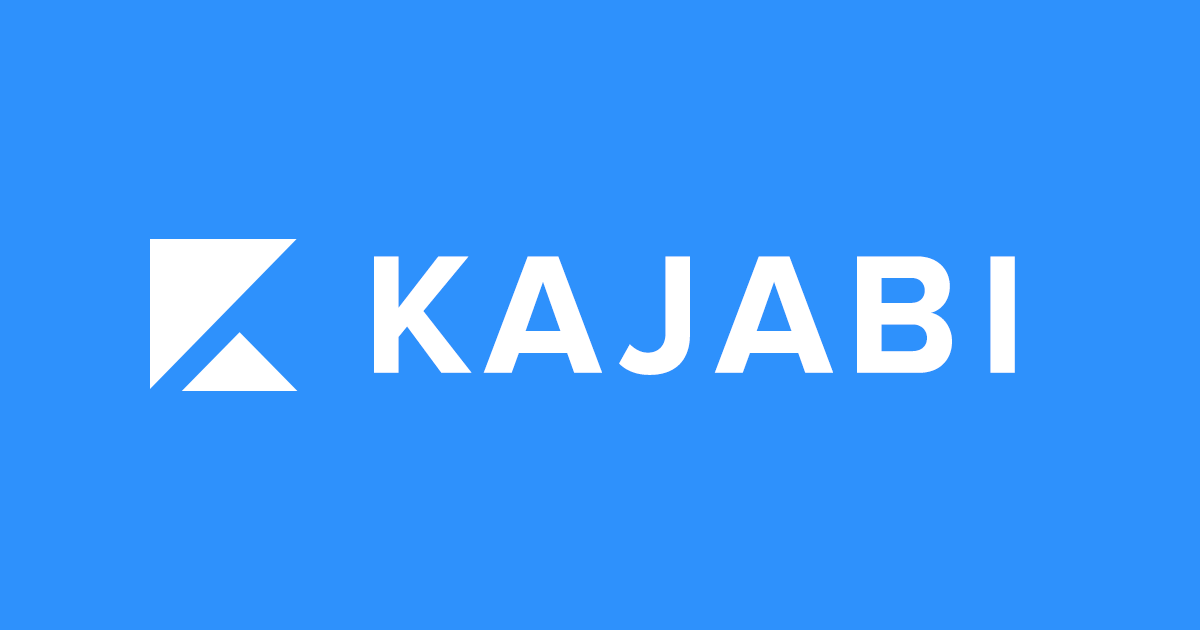So, you’ve got what it takes to make a name for yourself in educational entrepreneurship. But have you found the right platform that allows you to do so?
Course management or LMS services let you create meaningful content, share them with your students and potential customers, and make substantial profits from selling them. Today, there are hundreds of online LMS platforms out there, each with impressively convincing features that are hard to beat. It can be difficult to decide which one is right for you with all the options available.
Since I began selling courses, I have had many struggles finding the right place to learn my entrepreneurial skills. I jumped from platform to platform until I settled down with Kajabi once I became more confident. I may have already found the right one, but that won’t stop me from giving you sound advice to guide you through your journey.
I’ll be sharing with you brief rundowns on Kajabi as well as its other alternative LMS services. We will examine their unique assets, the pros and cons, how they compare, and my opinion about who gets to use them.

For those of you who prefer a more visual experience, here is a video review from Legit Marketing Reviews’ YouTube channel. Do check out our article below, however, because it has a comprehensive overview of Kajabi.
Kajabi: An Overview Kajabi Vs Besides Google
Some of you may have recognized the name “Kajabi” in passing. It is an online course management platform that is popular and well-known. You can create and sell courses with almost any solution you want.
Are you a course builder? It’s there. Stable website builder? It’s there. Are you looking for a wide selection of pre-made templates or themes? Certainly. A range of excellent sales and marketing tools, including fully functional sales funnel blueprints? Yes! No matter what you need to manage and sell your content, Kajabi has the tool to help you with that.
Kajabi presenting itself as a one-stop service is enough to resonate with developing and established edupreneurs quite well. It has received many glowing reviews, although there are some valid points of criticism. Trustpilot gave Kajabi an exceptional 4.6 rating.
Kajabi’s Key Features
Kajabi is primarily known for its simple yet intuitive interface, generous range of customization, and flexible editing capabilities. The course builder gives you all the tools you need to create a seamless educational experience for your students and you. Meanwhile, its website editor and free hosting allow you to have a fully personalized space where you could share what you have with anyone.
And it doesn’t stop here, because Kajabi has so much more to offer – its built-in suite of marketing tools, on one hand, works as impressively as most third-party providers combined. It is notable that LMS platforms have sales pipelines included. Other LMS platforms require you to connect with a separate service that offers this feature. On the other, Kajabi’s learning and support resources are as reliable as you could expect.
The Pros and Cons of Using Kajabi
Kajabi has a unique business model that isn’t often found on other LMS platforms. It’s all-in-one and offers many perks. One of these is the minimization of needing to integrate with third-party apps, as nearly all the course management and marketing tools are found in-house. Another lies in revenue – Kajabi takes none of its shares, meaning you get to keep 100% of your profit from selling content.
While it’s worth noting the benefits of Kajabi’s business model, we shouldn’t fully ignore its downsides. Pricing is a major problem. Plans start at over $100 more than other services. The lack of a free plan doesn’t help either. Many users aren’t happy with the absence of essential course management tools, especially certifications, on the platform. Kajabi’s cons aren’t as severe as its pros. However, they are still worth considering. Kajabi Vs Besides Google
Pricing plans begin with: Kajabi Basic, as low as $119/month
Is there a free plan? It does not offer a free plan, but you can try it for 14 days.
Reasons to choose Kajabi: You won’t need separate platforms or third-party integrations, very pricey yet very valuable plans, a reliable user community, amazing customer support
Kajabi is more suitable for Established professionals, newbies with enough financial resources to afford Kajabi’s features, experienced edupreneurs
Kajabi vs. Thinkific
Joining the likes of Kajabi in the lineup of leading online LMS platforms, Thinkific allows you to focus on the task at hand by exploring a diverse range of course-building tools and using it to your advantage to create content to share with your students. The Thinkific App Store allows you to connect with thousands of third-party platforms and offers a wide range of industry-level tools.

> > Click Here to Check Out Kajabi < <
Thinkific has been my tool for creating and selling course content since before Kajabi. Though my needs may have outgrown what Thinkific had to offer, I could at least appreciate how it gave me enough flexibility to handle my courses during my tenure. Thinkific offers both a free and a premium plan, making it a viable Kajabi option for anyone with limited resources, especially financial.
The Similarities
Thinkific positions itself as an all-in-one place with intuitive course management tools for a better learning experience. It is similar to Kajabi and offers a course builder, customizable website editor and a range of business tools. You can also create a community for your students.
Both platforms shine when it comes to their course option offerings. No matter which you prefer, you have the chance to create stable online courses and/or membership pages. Even better, you can create assessments in them that are rich with variety. As for teacher-student interactions, I’ve found that my subscribers had little to no issue at all navigating their version of the Thinkific interface just like with Kajabi.
The Differences
Thinkific offers its users a lineup of industry-level features at a reasonably valuable price range, despite borrowing the 0% transaction fee model from Kajabi. You’ll be able to see the differences in the premium entry-level plan and the one below. The former does not offer a free plan, but it offers a functional, though limited, one.
Other than the value pricing, Thinkific’s other bonuses include its far-more-accurate reports and analytics, as well as the way it handles security measures within the service.
The Pros and Cons of Thinkific
Thinkific’s ease-of-use is something I love about it. Another that I didn’t enjoy as much is the lack of depth some of its features have. Although I like its built-in credential system, it is not my favorite feature. However, the lack of advanced business tools or theme options for websites is a major downer. However, all of this has been compensated for by a greater range of integrations.
Pricing plans start at: Thinkific Start as low as $74/month
Does it have a free plan? Yes
Why Thinkific? A premium starter plan that offers smooth career progression, superior analytics and reporting capabilities, and a super-intuitive user interface.
Thinkific is better suited for Newbie Edupreneurs with limited marketing skills and those who want to sell courses without using complex marketing jargon.
Kajabi vs. Teachable
Teachable, another popular service, shares the same premise of Thinkific in that you can create a fully integrated learning experience. At the same time, it takes care of the rest, i.e., the technical stuff. It’s established by course creators for fellow course creators, so it makes sense that the focus at hand here is concentrated on course management.
Both beginners and professionals have praised Teachable. Beginners, particularly, stand by it due to the insanely cheap price range and extreme ease of use. Its extensive course management tools, rich content analytics, well-versed editing, customization, and editing capabilities are what keep pros returning to it. Teachable, like Thinkific, offers a fully functioning built-in certification tool, something Kajabi, unfortunately, does not have.
The Similarities
Teachable’s course-building feature offerings have what I can describe as the same caliber as Kajabi’s version. Both ways you would be happy with the ease with which you can create memberships, courses, and other products with seamless versatility. While you could technically take advantage of these with any of the two, it’s clear now that Teachable has the upper hand. Kajabi Vs Besides Google
Accessibility is a key component in course creation. Therefore, it’s important that students can access your content from any device at all times and places. Both Kajabi and Teachable address this with mobile apps that you can download on any handheld device, whether it’s powered by iOS or Android.
The Differences
Teachable may excel in its course creation and management capabilities, but not much so in other aspects. For example, its native marketing suite doesn’t carry the same weight as Kajabi. It’s evident that Kajabi gives its version the same attention and care as its course-building tools. Both platforms are excellent in terms of reporting and analysis. Teachable, however, is more detailed.

> > Click Here to Check Out Kajabi < <
Teachable’s general interface looks simpler and less complicated. Although you won’t need to put in a ton of coding effort – especially if you’re unfamiliar with the process itself – it gives you the space to maximize beyond its limits through its Power Editor.
The Pros and Cons of Teachable
Teachable is, and remains to be, extremely affordable, making it a solid hit for newbies and budget-conscious pros alike – so much so that I was strongly considering hopping on it when I entered into the course business! Its signature course management features are robust and easy to use, as well. It lacks in customization options and marketing tools. However, this is where the platform really shines.
Pricing plans start with Teachable Basic starting at $29/month
Does it have a free plan? Yes
Teachable is a great choice because of its user-friendly interface, advanced course management and analytics, and simple interface that allows for advanced-level adjustments.
Teachable is more suitable for Absolute beginner edupreneurs, established business professionals, budget-conscious power users
Kajabi vs. ClickFunnels
ClickFunnels is a top online service used by entrepreneurs and businesses all over the world. Although this sounds great, ClickFunnels operates in a different way than Kajabi or the other LMS platforms we have covered. It offers the usual course management, marketing and analytics tools but focuses heavily on the marketing aspect. Kajabi Vs Besides Google
ClickFunnels can be described as a digital marketing platform. It allows users to spread their content/products across the internet and expects to make a profit. It has a wide variety of competitive business features that can be used for any purpose. It’s pretty versatile, too – not only can you use it to promote your courses, but also your physical products if you have them! ClickFunnels is most well-known for its extensive library of sales funnel templates and split testing.
The Similarities
One factor that ClickFunnels and Kajabi have in common is the sales funnel feature. Both platforms offer a wide range of templates each strategically designed to encourage a bountiful flow of profit and optimized for any objective. Although both versions leave an impression, ClickFunnels offers more, as their primary strategy is to build sales pipelines.
ClickFunnels’ interface is just as intuitive as Kajabi. Both services are top-notch when it comes marketing and sales. The checkout and payment tools in particular are as intuitive as you would expect. Plus, their customer service is equally top-notch!
The Differences
A landing page is just as important in digital marketing as creating automated e-mails or crafting well-designed pipelines. Kajabi and ClickFunnels both have page-building abilities, but Kajabi only allows you to create a fully functioning website. ClickFunnels, however, limits you to a handful of page options, including the landing page.
Hiring affiliates within your member base is a guaranteed way to collect more leads and both services allow you to do just that with simple yet industry-grade tools. ClickFunnels allows you to use this function regardless of whether you have a physical or digital product. Kajabi allows you to access your digital content and your courses.
The Pros and Cons of ClickFunnels
I may not be that knowledgeable with deep marketing/sales jargon, but some of my colleagues who are can attest that ClickFunnels excels when it comes to delivering what it’s supposed to do. ClickFunnels guarantees entrepreneurs a higher conversion rate. The funnel-building and landing pages creation tools are also outstanding. Otherwise, it does not excel at all in terms of course-building – it’s clear as day that this aspect doesn’t matter as much for its developers.

> > Click Here to Check Out Kajabi < <
Pricing plans begin with: ClickFunnels Basic, as low as $127/month
Is there a free plan? No, but it offers a 14-day free trial
ClickFunnels is a strategic focus on digital marketing. This guarantees a higher sales turnout. ClickFunnels also allows for flexible integration with other apps, such as LMS platforms.
ClickFunnels works best for Edupreneurs who have large budgets and individuals who wish to sell digital courses as well as physical products. Kajabi Vs Besides Google
Kajabi vs. Kartra
Kartra is another popular choice for market-savvy entrepreneurs. It specializes in product sales, marketing campaigns and other fail-proof strategies. This one here is interesting – it functions similarly to Kajabi in that it lets you build courses and memberships on the spot, yet also operates similarly to ClickFunnels when it comes to other aspects like page building, marketing tools, and the ability to sell both physical and digital products.
With an eye for increased engagement, Kartra helps you leave your subscribers begging for more through its archive of pre-made full sales campaigns or pipelines, a uniquely convenient scheduling system, and additional website widget options. You can also share your campaigns with fellow Kartra users, and even acquire a 360-degree view of where your leads are heading.
The Similarities
Kajabi and Kartra excel in offering an impressive range of business features that are industry-leading. With the sales pipelines, on one hand, you’d have the chance of success no matter where you look as both have plenty of optimized templates. You’d also have access to a wide range of marketing tools, including automations.
Nearly the same thing can be said about their page-building capabilities. Although you may have more options to explore with Kartra, both platforms take the cake in terms of performance and flexibility. I’d just like to add my two cents here: though there are notable similarities both Kartra and Kajabi share, I also think the same applies to ClickFunnels, considering there are certain characteristics that are identical to the other.
The Differences
ClickFunnels may be losing to Kartra, which has a good number of course management tools. If you compare it to Kajabi’s version of Kartra, you might find that Kartra isn’t able to keep up with it as well. Despite this, Kartra is a great marketing and lead generation tool.
You might find things like countdowns and pop-ups in the widgets available on its website builder. These are all great ways to convince potential customers. This is what happens when you have a platform that puts one thing above all others. There may be some cons, but there will always be pros. Kajabi Vs Besides Google
The Pros and Cons of Kartra
Kartra is robust in its offering of features from business to page creation, and its set of plans is worth great value as you could make the most out of its core tools no matter where you look. While Kartra may shine in its business tools, the same can’t be said with its course building. It can also be difficult to navigate, especially for beginners.
Pricing plans start at: Kartra Starter as low as $79/month
Is there a free plan? No, and it doesn’t offer a free trial either
Kartra is a top-quality business tool that doesn’t always need code, enhanced customer retention options and powerful video hosting.
Kartra is better suited for individuals who want to sell digital and physical products. It’s also more appropriate for entrepreneurs with an eye for marketing.
Kajabi vs. Podia
A fan favorite and an underrated one, Podia is an LMS platform best known for its very affordable price range, extremely easy-to-explore user interface, and a list of valuable yet functional course and business features. It is similar to Kajabi but a lighter and more accessible version. Podia, along with the previously mentioned Teachable, has been seen by many course creators as a great starting point in their careers.
This is something I can attest to as Podia helped me to get into the field. Without Podia, I wouldn’t have learned about course-building and wouldn’t use Kajabi or other high-end services. Course management aside, Podia takes one step ahead of the rest in communication, as it offers users the ability to directly message their customers with no fuss. Kajabi Vs Besides Google
The Similarities
Podia is poised to be a kind of LMS that’s all-in-one in nature, much like Kajabi and, to some extent, Thinkific. Podia’s version is more affordable and easier to use than the premium-level tools of the two other LMSs. But, no matter where you look, you’ll find a ton of functionality whenever you use any of their feature offerings.
Podia offers a variety of flexible and dynamic functions that cover nearly every aspect of course management. These include the course builder, player, page themes, sales funnels, and even sales funnels.
The Differences
Although the idea of an all-in-one platform that is budget-friendly may sound appealing, Podia, as it is designed, can be guessed now that there will always be limits. You’ll see that it is more affordable than Kajabi’s.
Podia may have the right platform to help beginners grow, but not enough to further develop them into experts – it’s for this reason that I had to switch to Thinkific once I felt it was the right time. Although Podia is not as sophisticated as Kajabi’s, it is still very functional and straightforward for the price. Its interface is so easy to use that it’s loved by both beginners and professionals.
The Pros and Con of Podia
You can create unlimited courses with Podia. This is great for power users or if you are a beginner. All premium plans include transaction fees, and you don’t have to pay any transaction fees. Podia does offer a free plan, but there are lots of limitations that may be getting in your way. Kajabi Vs Besides Google

> > Click Here to Check Out Kajabi < <
Pricing plans begin with: Podia Mover, as low as $33/month
Does it offer a free plan? Yes
Reasons to choose Podia: Flexible and convenient ease of use, creator-friendly course management features, great affiliate marketing and drip campaign tools
Podia is more suitable for DIY entrepreneurs, absolute newbies, those looking for a test drive in course management
Kajabi vs. Mighty Networks
Mighty Networks started as a social media network. It has since grown to be a popular platform with a large following.
It places a strong emphasis upon forging connections and building community. You can also use its marketing and course-building functions. And you can share what you have made through your customizable social media feed, which you can personalize. Your feed can be used to send updates, allow your members to comment, or even notify them that you are hosting a live stream. If I could describe Mighty Networks in a few words, it’d be “it works just like Facebook!”
The Similarities
Similar to Kajabi, Mighty has enough tools to let you create courses, memberships, and other kinds of content in-house. Both have decent video hosting and live-streaming, which means, if you’re into teaching through the video format, you could film and upload them to any either platform scot-free.
Both services also offer mobile apps which you or your students can download and interact with your content anytime and anywhere. This is a great advantage because they are compatible with both iOS and Android devices. Accessibility is high assured. Mighty has recently added an affiliate program, but since it’s new, it might take many years to be as robust as Kajabi’s. Kajabi Vs Besides Google
The Differences
Kajabi and Mighty are different in that they specialize in something else. Kajabi focuses more on community building, while Kajabi focuses on courses and a variety of other things. And, as you can expect, it’s clear that Mighty’s course-building capabilities are… not at their best. They may be functional, at least, but not as advanced as Kajabi’s.
Kajabi‘s communication tools, meanwhile, are decent enough, but they’re not as dynamic as Mighty’s. Although Kajabi claims to be a one-stop platform, I find it hard to believe that it can keep up with Mighty’s messaging, social feed, and comments capabilities. I am a Kajabi user, so I can attest to this!
The Pros and Cons of Mighty Networks
It’s obvious by now that Mighty Networks shines best in its community-building skills. The platform has been recognized as an ideal place for networking. It can be used for course content as well as for many other products. It’s been established that Mighty’s ability to create course content is very limited. To add insult to injury, this feature is only available to subscribers to higher business plans.
Pricing plans start with the Community Plan starting at $33/month
Is there a free plan? It does not offer a free plan, but you can try it for 14 days.
Mighty Networks is a great choice: A highly-optimized social network for you and your friends, a more-functional mobile app, and minimal course-building and other marketing tools
Mighty Networks is better suited for Edupreneurs, who believe communication is the core of course management, and professionals who want to integrate it with other services.
Conclusion Kajabi Vs Besides Google
As we reach the end of this comprehensive list of reviews, I hope that this one helped you in any way in forming your final decision. Although choosing the right LMS platform is not an easy task, there are many credible resources and opinions available from other users that can help you make a decision.
Kajabi is a service I recommend. If you are considering Kajabi as a service, it can be assumed that you have the professional skills to want to give it a try if you plan on becoming an edupreneur. I can also bet that you have enough finances to afford it. With the grand array of features and a hefty price tag, you can sense that Kajabi’s offerings may be worth the investment, despite the reservations – and you may be right about this one.
However, if you think you’re not confident with the resources you currently have – may it be a lack of monetary funds, professional skills, or other things – and if you feel that whatever Kajabi offers may be too much for your liking, then you may not be ready. If that’s the case, I’m always glad to let you try out any of my other suggestions.
If you’re into connecting with your members yet don’t mind about the barebones course tools, Mighty Networks may be your best bet. If you’re running short on budget, it’s either between Teachable or Podia. Better marketing and sales tools? You can choose between ClickFunnels and Katra. Are there affordable alternatives to Kajabi? Look no further than Thinkific and Podia.
It doesn’t matter what LMS you choose, but what matters is that you have the platform to help you become a better educator. Again, I’m very glad to have helped you choose the right LMS to jumpstart your career in the course business!

